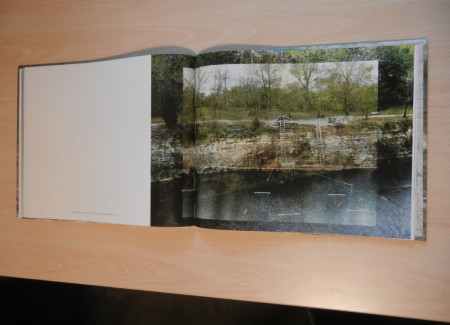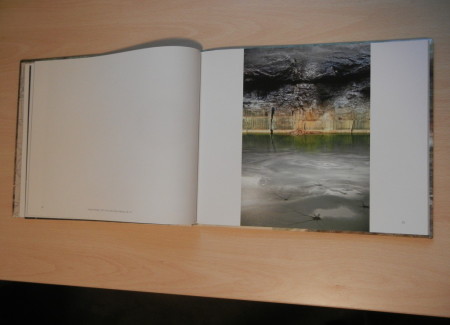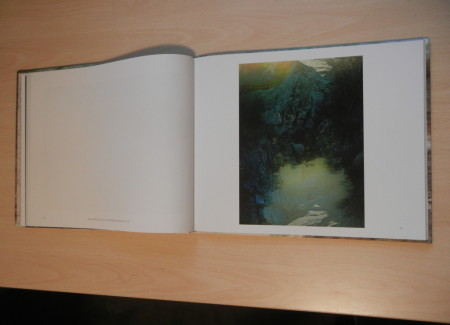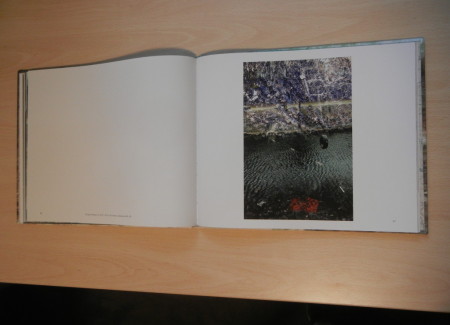JTF (just the facts): Published in 2013 by Damiani/Crump (here). Hardcover, 96 pages, with 52 color images/details. Includes an essay by Kevin Moore. (Spread shots below.)
Comments/Context: Given their potent mix of forgotten industrialism, environmental ruin, and abstract geometric flatness, abandoned rock quarries have now become a recurring photographic cliche. But instead of documenting the desolation of their crumbling forms, the angular facets of their smooth sides, or the leaching pools of colorful pollution in their bottoms, Elena Dorfman has opted for a more inconclusive and ephemeral approach, using layered images to probe how these sites have been reused over time and how the ghosts of their prior selves still echo in their current forms.
Many of the sites Dorfman has uncovered have been repurposed in one way or another, the dangerous open pits turned into swimming holes, walking paths, or small lakes with boat docks; these landscapes have long histories, with remnants of old and new mixing together. To capture this shifting reality, her pictures recall the multiple exposure techniques of the film era, executed with the power of today’s digital tools. Each work is a composite sandwich of multiple photographs, huge blocks of stone, heaps of slag, and hulking equipment hiding underneath changing seasons or new embellishments like wispy auras. We see fleeting glimpses of trucks and conveyors, tires and discarded blocks, now buried under new greenery or erased by time, coming forth like mirages or apparitions. In one work, the local graffiti of high school teams, lovers’ initials, and fraternity letters has been stitched together into an impossibly massive wall, with a lone diver looking down at a perilous jump to the water below; past and present have been manipulated into an evocative unreal combination.
What I find interesting here is the idea of a photographic landscape not capturing a single moment in time, but instead collapsing a continuum of alterations and events into a single frame. It’s not a before and after exercise, a rephotography project, or a mysterious “something happened here” series, but a mashing up of time into one integrated form, like being able to see through layers of sediment piled on top of one another. In this manner, the passing of photographic time is skillfully merged together, with flashes of memory bursting through the surface like hallucinations.
Collector’s POV: Elena Dorfman is represented by Modernism in San Francisco (here). Her work has not yet reached the secondary markets with regularity, so gallery retail remains the best option for those collectors interested in following up.













